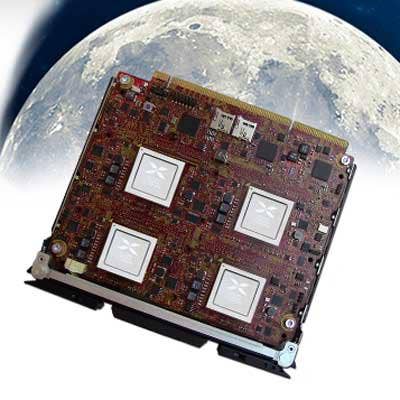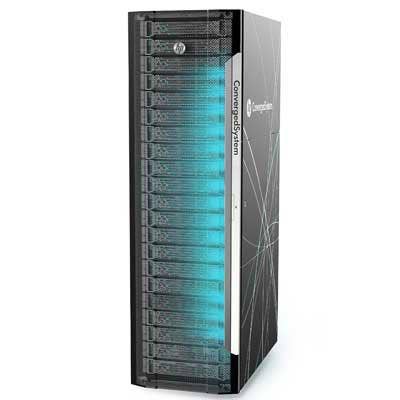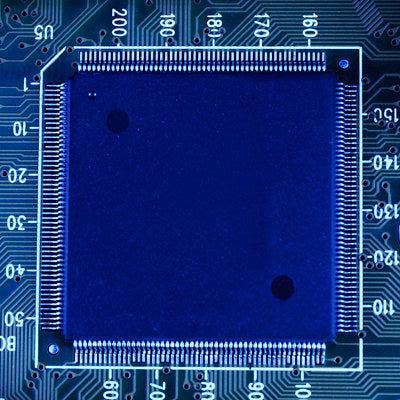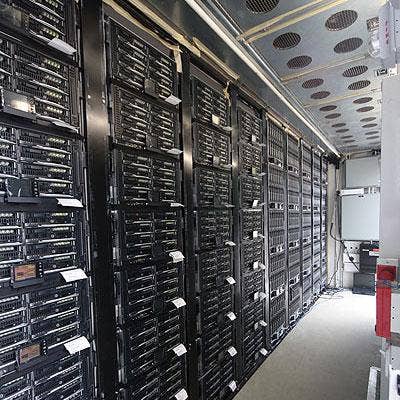10 Data Center Predictions For 2014

Top Of Mind In 2014: Data Center Efficiency
Squeezing more efficiency out of the data center, whether it's a full-blown, multitenant, fully hosted service or a server closet for a five-man shop, has always been a top goal for the administrators who run them. However, recent advances in server, client, power management and cloud technologies, if they haven't made efficiency easier to do, have at least made it possible to better control the power and performance profiles of the various parts of the data center.
As a result, efficiency will be the battle cry for data center admins in 2014 even more so than in the past. But it won't be efficiency for efficiency's sake. Instead, new efficiencies will be tied ever more closely with business objectives and, indeed, even with marketing campaigns as businesses look to be responsible corporate citizens.
Turn the page and see what likely will be among the top data center initiatives for 2014.

10. The Year Of The Virtual Desktop -- Again
It has been the "Year of the Virtual Desktop" for the last decade or so. However, 2014 could finally see real progress as businesses realize the benefits of not purchasing full-fledged PCs for a large part, or even a majority, of their work forces.
However, these will not necessarily be traditional thin client devices. Sure, thin clients, or zero clients, will increasingly be adopted by call centers or other businesses where standardized end user devices are important. But the virtual desktop of the future will likely be a mishmash of standard devices and mobile PCs, tablet PCs and even smartphones. The choice of form factor will be determined by the application, and not the other way around. And end users will increasingly demand a voice in selecting which devices they use in a virtual desktop scenario.

9. Unneeded Servers Will Be Put Down
While larger companies have put in place power management tools to ensure servers and other data center hardware run efficiently, such tools have yet to filter down to smaller business. Smaller businesses traditionally have had a manageable number of servers, but the ease of which servers can be purchased and deployed means that that number can easily grow out of control, leaving one or more drinking from the power feeds and doing nothing productive.
Look for power management tools to be increasingly developed for smaller and midsize businesses that in the past could not afford them, but today cannot afford to feed servers that give nothing back in return.

8. Buzz About Hyperscale Servers: Louder, But Still Just Buzz
2013 saw a lot of noise generated around hyperscale computing, which includes such high-density servers as Hewlett-Packard's Moonshot, as well as the Facebook-led, open source Open Compute Project, which designs high-density server solutions.
Hyperscale computing is designed to build highly efficient web-scale data centers. As a result, it is still very much a niche market mainly centered on web services providers.
For the vast majority of data center customers, hyperscale computing will remain noise in 2014 and perhaps beyond until more general-purpose applications are written that take advantage of the technology.

7. Converged Infrastructures: More Emphasis On Nonproprietary Hardware
When the concept of converged infrastructures, which integrate server, storage, networking and/or software resources into a solution that can be managed as a single architecture, first appeared on the market three or four years ago, the primary proponents were large hardware vendors like Hewlett-Packard, Cisco, EMC, NetApp and Dell.
Starting in 2013, several startups joined the market, including those with low-cost industry servers running proprietary software, as well as those who just sold the software for integration by customers on their own hardware.
2014 will see the concepts of software-defined data center and converged infrastructure more frequently spoken in the same breath. This push will be led by the smaller startup vendors looking to chip away at the market share of their larger competitors by emphasizing the advantages of basing data center functions, and even the cloud, on industry-standard servers instead of proprietary hardware.

6. Low-Power Server Chips Stumble, Will Recover
The abrupt closure in late 2013 of ARM processor-based server module maker Calxeda all but took out of the picture one of the more promising developers of technology for low-power consumption servers.
However, the push to cut server power consumption will continue in 2014. But it will be a bifurcated market. Intel and AMD will continue developing power-sipping processors that cater to customers' general-purpose applications, which run primarily on Windows and Linux. ARM-based processor developers will push the envelope on web applications with new 64-bit processors for the server business.

5. Software-define This!
Software-defined networking and storage are joining with server virtualization to enable entire data centers to be built using cheap industry-standard white-box servers on top of which runs software applications that handle the functions of legacy proprietary hardware.
Right.
Despite the hype, it hasn't happened yet. But watch for it to start taking hold in 2014 thanks to the solidification of standards, the proliferation of startup software developers with no legacy hardware margins to protect, and fast reaction from legacy hardware providers who worry about protecting their margins.
As an example, just look at EMC. The company is the storage industry's top hardware vendor, but it is also the company that is pushing the envelope on software-defined storage. Or Cisco, which is trying to wrest away the mind share in software-defined networking despite its hardware installed base.
As Heather O'Rourke said in Poltergeist, "They're heeere."

4. Slow Growth For Public Clouds
It may seem counterintuitive given all the hype around the cloud, but 2014 will likely see muted growth of business-focused public cloud computing as data centers review the security risks of public clouds after some really serious break-ins in 2013.
The public cloud will be where consumers live, as the flexibility and cost offered outweigh security concerns, especially among younger generations of users born with tablet PCs and smartphones in their hands. For businesses, the public cloud will remain more of a place where data is stored for emergencies (i.e., disaster recovery) or even archived.

3. Private Cloud Development To Boom
For companies running large data centers that serve a large internal customer base and/or a security-sensitive external customer base, the development of private clouds, usually taking advantage of hardware and software infrastructures already in place, can be a serious boon in efficiency.
So, at the risk of sounding obvious, 2014 will be a big growth year for private clouds. The year also will see a huge push by solution providers who have in the past generated the bulk of their revenue from hardware to make private cloud a key offering for customers.
How about abandoning all that low-margin legacy hardware business? That won't happen. Hardware is often the "foot in the door" for talking private clouds with clients, and can be key to upgrading an existing data center or architecting a new data center to take advantage of new private cloud capabilities.

2. Fewer Data Centers
The U.S. Federal government, which is on a data center consolidation spree, in 2013 caught industry observers off-guard after announcing that it actually had more data centers than when it started the consolidation project. The actual reason for the uptick, however, was a change in how the government defined the word "server" to include smaller installations such as server closets.
However they're counted, the world likely has too many data centers, leading to duplicate infrastructures and a raft of unnecessary expenses, including real estate, power consumption and administration. The problem is compounded with every merger or acquisition, unless the surviving entity immediately jumps on eliminating the excess capacity.
For 2014, expect more concerted efforts by customers to eliminate data centers either by combining existing facilities, moving some data center functions to the cloud, or deepening their relationships with third-party hosted data center providers. And that will be great news for solution providers with data center migration expertise.

1. BYOD, not BYOA
Data center administrators, for the most part, are still trying to figure out how to deal with users who insist on using their own devices, including laptops, tablets and smartphones. Ensuring company applications work on a multitude of devices while offering the kind of security expected in the business world is far from a given, and 2014 will continue to see BYOD as a focus of the data center.
However, don't expect to see the same progress in the newest end user buzzword, BYOA, or "bring your own application." Users familiar with certain applications they use for personal business will increasingly look to bring those applications to their business life. Here is where data center administrators will look to draw the line. It is already hard enough for most businesses to secure and enforce policies on devices running multiple business applications. Securing multiple applications tailored to users' preferences is another layer of complexity.
BYOA will have one positive impact in 2014, however. Enough users wanting to use their own applications could tell the data center admins that they need to consider whether such applications can increase worker productivity and should, therefore, be brought in and managed as any other business app.